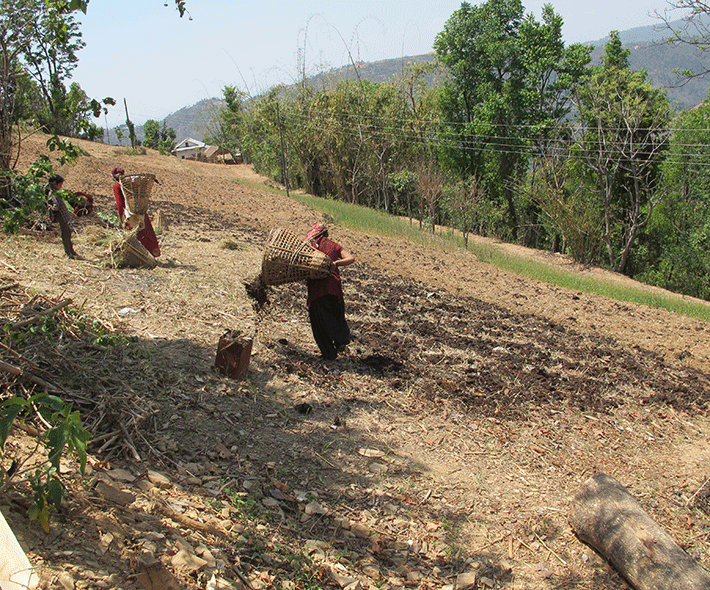A new framework to promote socially just and equitable interventions in forest landscape restoration has been published by gender researchers from Bioversity International, Center for International Forestry Research, and the World Agroforestry Center. Developed within the CGIAR Research Program on Forests, Trees and Agroforestry, the framework explains that restoration initiatives must consider how gender relations shape access to and control over land and its use, and how changes in land use that may result from restoration can disadvantage women if their rights to resources, priorities, and contributions of labour and knowledge are overlooked.
A closer look at gender relations in forest landscape restoration
- From
-
Published on
15.10.18
- Impact Area

On this occasion of the International Day of Rural Women, Giulia Micheletti and Marlène Elias from Bioversity International discuss a new framework on how forest landscape restoration can promote gender equality by encouraging a more meaningful participation of women and recognizing their unique expertise in restoration activities.
For many rural women, fulfilling everyday responsibilities such as agricultural production and home gardening, as well as collection of fodder, fuelwood, water and forest products have become more difficult due to environmental degradation. This adds to women’s heavy labour burdens as, for example, they have to venture farther from home to gather these products. Yet, while the need to restore degraded lands and landscapes is pressing and gaining global attention, restoration initiatives often overlook rural women. Since rural men typically have more public authority than women and are considered heads of their household, interventions that work with rural communities tend to favor them when it comes to choosing the areas and species to restore. In fact, gender inequality is an important but under-appreciated factor hindering restoration and the fair distribution of benefits from the process.
![]()
Related news
-

From Dirt to Decision-Making: Governance and Soil Health Must Go Hand in Hand
Multifunctional Landscapes Science Program26.11.25-
Biodiversity
-
Environmental health
-
Environmental health & biodiversity
In October, the world convened in Des Moines for the 2025 Borlaug Dialogue under the…
Read more -
-

ICRISAT’s Solar-Powered Water Hyacinth Harvester Recognized Among India’s Top 100 Innovations of 2025
International Crops Research Institute for the Semi-Arid Tropics (ICRISAT)18.11.25-
Environmental health
-
Poverty reduction, livelihoods & jobs
ICRISAT's Novel Solar-Powered Water Hyacinth Harvester has now earned a place in the prestigious To…
Read more -
-

CGIAR Multifunctional Landscapes at COP30: Advancing Adaptation and Nature-Based Solutions
Multifunctional Landscapes Science Program10.11.25-
Adaptation
-
Biodiversity
-
Environmental health
-
Environmental health & biodiversity
-
Mitigation
COP30 in Belém, Brazil is being heralded as a pivotal “COP of adaptation” and a…
Read more -
